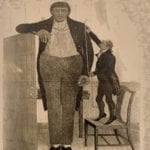 Travel
Travel  Travel
Travel  Creepy
Creepy 10 Haunted Places in Alabama
 History
History Top 10 Tragic Facts about England’s 9 Days Queen
 Food
Food 10 Weird Foods Inspired by Your Favorite Movies
 Religion
Religion 10 Mind-Blowing Claims and Messages Hidden in the Bible Code
 Facts
Facts 10 Things You Never Knew about the History of Gambling
 Weird Stuff
Weird Stuff 10 Cool and Creepy Facts about Collecting Tears
 Humans
Humans The Ten Most Lethal Gunslingers of the Old West
 Misconceptions
Misconceptions 10 Phony Myths and Urban Legends That Just Won’t Die
 History
History 10 Amazing Roman Epitaphs
 Travel
Travel Top 10 Religious Architectural Marvels
 Creepy
Creepy 10 Haunted Places in Alabama
 History
History Top 10 Tragic Facts about England’s 9 Days Queen
Who's Behind Listverse?

Jamie Frater
Head Editor
Jamie founded Listverse due to an insatiable desire to share fascinating, obscure, and bizarre facts. He has been a guest speaker on numerous national radio and television stations and is a five time published author.
More About Us Food
Food 10 Weird Foods Inspired by Your Favorite Movies
 Religion
Religion 10 Mind-Blowing Claims and Messages Hidden in the Bible Code
 Facts
Facts 10 Things You Never Knew about the History of Gambling
 Weird Stuff
Weird Stuff 10 Cool and Creepy Facts about Collecting Tears
 Humans
Humans The Ten Most Lethal Gunslingers of the Old West
 Misconceptions
Misconceptions 10 Phony Myths and Urban Legends That Just Won’t Die
 History
History 10 Amazing Roman Epitaphs
10 Real-Life Inspirations For Famous Literary Characters
Whether we liked English class or not, there’s a handful of literary characters that we all grew up hearing about. For generations, we’ve heard the stories of Dr. Frankenstein, Quasimodo, and Winnie the Pooh. Authors have to get their inspiration somewhere, and it turns out that a number of writers gleaned their visions from real-life people who were frighteningly similar to those that they wrote about.
10 Deacon William Brodie
Dr. Jekyll And Mr. Hyde
 The Strange Case of Dr. Jekyll and Mr. Hyde was a novella by Robert Louis Stevenson that told the story of a distinguished gentleman Dr. Jekyll and the monstrous Mr. Hyde, coexisting in the same body. More than just a psychiatric study on split personality, the novella has long been the stuff of horror movies and comic books. The real-life inspiration for the character was no less horrific.
The Strange Case of Dr. Jekyll and Mr. Hyde was a novella by Robert Louis Stevenson that told the story of a distinguished gentleman Dr. Jekyll and the monstrous Mr. Hyde, coexisting in the same body. More than just a psychiatric study on split personality, the novella has long been the stuff of horror movies and comic books. The real-life inspiration for the character was no less horrific.
Deacon William Brodie was born in Scotland in 1745, one of 11 children in the long line of an ancient family. His father was a cabinetmaker and upstanding member of city government. He was described as looking much younger than his actual age, being pale and dark-eyed, and having a very peculiar walk.
When he was in his thirties, he found his direction after watching a play called The Beggar’s Opera. Brodie became enamored with the idea of the darker side of life, where prison was a constant threat and every person and their ideals could be bought for the right price. While he attended performances of the play night after night, he relented to follow in his father’s footsteps by day. He became a cabinetmaker and took over the family business, as well as his father’s position as Deacon of the Wrights, giving him some notice and control on the town boards of Edinburgh.
His job as a cabinetmaker allowed him access to the houses of some of the richest, most influential people in Edinburgh. Before long, he was making wax imprints of the keys to their homes, then breaking in and stealing whatever he and his newly acquired gang of thieves could carry. He used the loot to support his double lifestyle of respectable government official by day, gambler by night. He also managed to acquire at least two mistresses and numerous illegitimate children. He and his accomplice George Smith (also known as “the demon grocer”) were tried, convicted, and executed in 1788. Brodie attempted to wear a steel collar to prevent the noose from strangling him, but his plan ultimately didn’t work.
Bizarrely, Robert Louis Stevenson’s childhood home had furniture made by Brodie. He was so intrigued by the story of his double life that he collaborated on a play called Deacon Brodie before writing Jekyll and Hyde on his own.
9 Thomas-Alexandre de la Pailleterie
The Count Of Monte Cristo
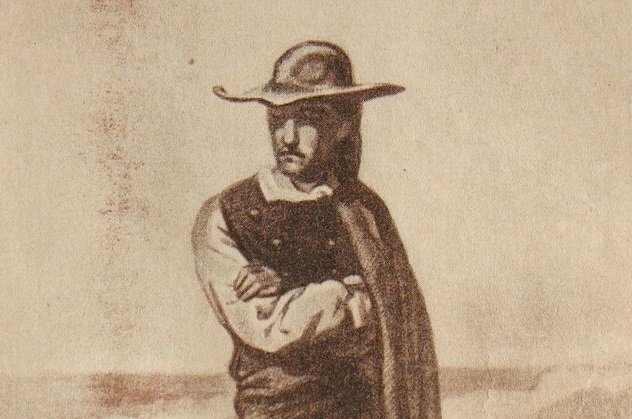
What do the characters of The Count of Monte Cristo and The Three Musketeers all have in common, besides their author? They were all inspired by the same man—Thomas-Alexandre de la Pailleterie, the Haitian-born son of a French nobleman and a slave girl. In 1775, his father returned to France to claim his family lands, selling his son into slavery to pay for the trip. Once there and established, he brought the boy over with him. That boy, Thomas-Alexandre, ended up wanting to join Napolean’s army. He was accepted under the condition that he not use his lordly name, so he adopted his mother’s name, becoming known as Alexandre Dumas.
His life was the stuff of legends, so it’s not surprising that his son, Alexandre Dumas, used his memory to inspire characters who would become some of literature’s great heroes. Dumas the elder was an expert swordsman and equestrian, who rose to prominence fighting for the oppressed after the revolution seized his adopted home country. His most notable victory was against an Austrian invasion force that was advancing on Paris. He declined the 5,000 troops that he was offered, instead taking 20 men with him. They won, defending a strategically important bridge against 1,000 advancing troops. He met his future wife when he defended her against invading brigands, and at the height of his military career, he rode at the head of 53,000 men.
His fate was sealed when he was fighting alongside Napoleon in Egypt and was mistaken for the commander. Napoleon left him in an enemy prison, and by the time he returned to France, slavery had been reinstated. Orders were issued to kill any black man wearing an officer’s uniform. Dumas succumbed to stomach cancer when he was 43 and his young son only four. According to the stories, when the future writer of The Count of Monte Cristo heard about his father’s death, he swore he would go to heaven, confront God, and demand his father back. That aspiration was a bit lofty, but his immortal work inspired by stories of his father’s abandonment in prison may have been some consolation.
8 Winnipeg The Bear
Winnie The Pooh

Winnie the Pooh—the honey-obsessed, forgetful bear of the children’s stories—really was inspired by a real bear. The bear was named Winnipeg and her story is a sad one.
It starts with an Englishman who emigrated to Canada in 1905. Captain Harry Colebourn was a graduate of veterinary science from the Ontario Veterinary College, and as such, it was his job to oversee the army’s horses when he entered the Canadian Army Veterinary Corps during World War I. They were on their way to the shipping-out port for the army when he ran into a hunter who had, for some inexplicable reason, saved a tiny bear cub after shooting and killing her mother.
Colebourn bought the baby bear, named her Winnipeg, and brought her along with him on the trip overseas. Winnipeg—called Winnie for short—traveled on the troop ship to England, where she became popular with the enlisted men. When the soldiers were about to be deployed into active combat, Colebourn didn’t want to risk Winnie’s life, so he gave her to the London Zoo. Originally, she was only on loan, but she became so popular there that he gave the zoo permanent custody of the bear at the end of the war.
Winnie would give children rides on her back and eat from their hands. Two of her most frequent visitors were a man named AA Milne and his son, Christopher Robin. Christopher was so enamored of the bear that he renamed his own teddy bear Winnie in her honor.
Winnie the Pooh was published in 1926. Sadly, the real Winnie was euthanized in 1934, after she was partially paralyzed by a stroke.
7 Cushman Albert Rice And Max Gerlach
The Great Gatsby
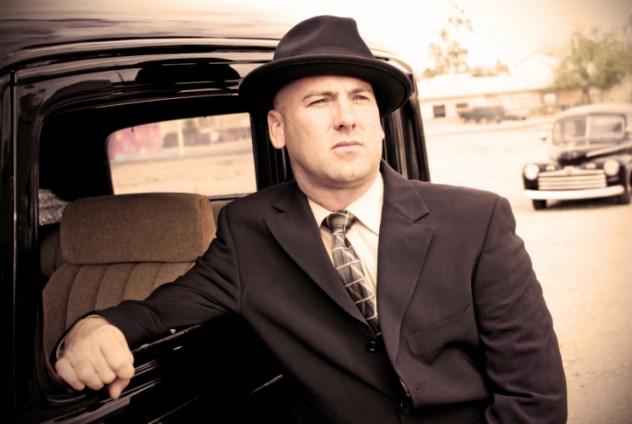
F. Scott Fitzgerald himself may have been somewhat vague when he spoke about his inspiration for Jay Gatsby, but according to his wife, there was no question. Before Zelda Fitzgerald died in 1948, she pointed to a man named Max Gerlach as the real inspiration for one of Fitzgerald’s most intriguing characters.
Gerlach was a family friend—as evidenced by letters, notes, and handwritten messages on family photos—and a complicated character. While some of Gatsby’s traits, such as his love for a woman, are clearly drawn from Fitzgerald himself, much of the character’s past comes from Gerlach. Even some of Gatsby’s mannerisms, such as calling people “Old Sport,” are mentioned in several notes Gerlach wrote to Fitzgerald.
Gerlach was a well-known bootlegger and some sources think that he supplied Fitzgerald with his supply of alcohol during Prohibition. Gerlach was famous for his extravagant lifestyle and parties, but in the end, his income just couldn’t support it. He was visiting a girlfriend and reading the paper in 1939 when, suddenly overwhelmed by his debts and the collapse of his legitimate car business, he shot himself in the head. He survived, although he was blinded, eventually dying alone in 1958.
Another contender for the inspiration behind Gatsby is the man who gave Gerlach a reference when he was entering the army. Cushman Albert Rice was a larger-than-life big-game hunter and war hero who always kept his military medals with him as he was traveling the world, throwing parties that would have made Gatsby proud.
6 Delphine Delamare And Louise Pradler
Madame Bovary
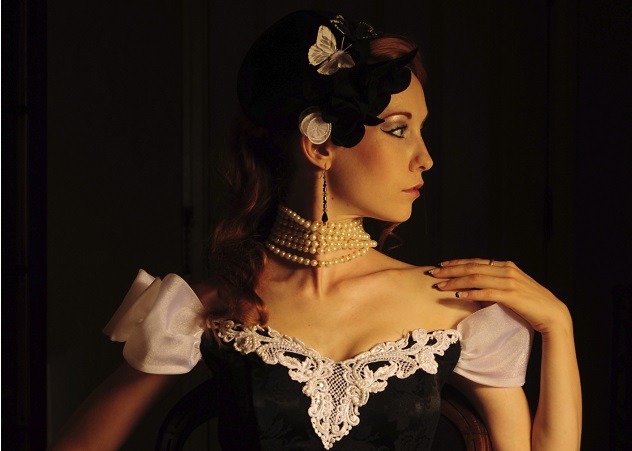
Although Gustave Flaubert has always denied the connection between Delphine Delamare and his infamous Madame Bovary, many scholars believe that the similarities are too many to be simple coincidence. The fictional Madame Bovary was a spoiled French farmer’s daughter who wasn’t content with her boring country life married to a simple doctor. She had affair after affair, finally killing herself with arsenic when she just couldn’t deal with it any more.
In a story that echoes that of the fictional work, Delphine Delamare was unhappy with her life, married to a marginally capable village doctor. In spite of the fact that she was reported to be frumpy at best, she entertained lover after lover before taking her own life. It’s thought that Flaubert’s family knew Delamare and her husband and even lent them money at one point, explaining his hesitation to name her as one of the sources for Madame Bovary.
The other woman who undoubtedly went into the creation of Flaubert’s lusty heroine was one of his own lovers, Louise Pradler. Trapped in a loveless marriage that she submitted to only to get away from her father, Pradler lived a life of empty luxury in Paris. She entertained countless poets, writers, and artists, when she met Gustave Flaubert. By all accounts, he was fascinated by this woman who appeared to have everything that anyone could ever want, but still remained unhappy with her lot in life. Eventually, her husband grew tired of her and kicked her out. Flaubert used a biographical manuscript that had been started but never finished for insight into her world.
5 Tom Sawyer
The Adventures Of Tom Sawyer

Just how much of The Adventures of Tom Sawyer was actually based on the real person of the same name is up for debate, but while living in San Francisco, Mark Twain really was regularly seen drinking and playing cards with a young man named Tom Sawyer.
This Sawyer had been born in Brooklyn, where he started his lifelong career as a firefighter. He and Twain hit it off after discovering they shared a career and a fascination with riverboats. Sawyer had been a fire engineer on the steamboat Independence, which had run aground during its regular route between San Juan del Sur, Nicaragua, Acapulco, and finally San Francisco. The ruined steamboat took on water and quickly caught fire as its equipment started to fail. Sawyer was ultimately given credit for saving 90 lives, carrying men, women, and children on his back as he swam between the doomed steamboat and shore. While he dragged passengers to safety, others managed to get lifeboats lowered into the water. Once the lifeboats were operational, Sawyer started using that to ferry people back and forth.
Sawyer finally ended up in San Francisco, where he became a customs inspector and continued to work as a volunteer with local fire departments. It was also there that he ran into Twain on a two-month hiatus that eventually led to him staying in the city for three years.
4 Alexander Selkirk
Robinson Crusoe
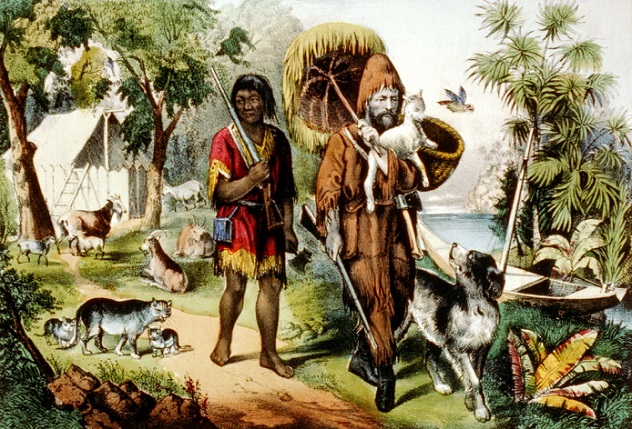
Daniel Defoe’s Robinson Crusoe is often considered one of the first great British novels. The inspiration came from a very real person named Alexander Selcraig, who was born in Scotland in the late 1600s. Constantly in trouble, he was described as an arrogant, hotheaded young man who would throw a punch at the drop of a hat. In fact, one of his final fights in Scotland—that led to his life on board a ship—involved Selcraig, his two brothers, his father, and his father’s wife.
From there, he decided life at sea was a better prospect than he had on land, but his cruel, arrogant nature served him no better in the close confines of a ship. After a long year of pirating, scurvy, starvation, dysentery, and cholera, Selcraig—who had changed his name to Selkirk when he left Britain—confronted the captain of his ship. The ship was badly worm-eaten and needed to be beached on an island while the crew made it seaworthy again. They beached the ship, made repairs, and were setting off again when Selkirk got into an argument with the captain. Having decided to make an example of Selkirk, the captain kicked him off the ship and left him on the island with only a handful of basic survival gear. Selkirk begged to be allowed back on the ship, but was left standing in the ocean as they sailed away.
He survived for four years and four months, eating fish, crabs, and goats. He even befriended some feral cats that would hunt and keep the rats out of his makeshift shelter. He dodged Spanish ships and crews that landed on the island and would have enslaved him, and he learned the value of prayer.
His far-fetched story might have been called a complete lie if the ship that finally rescued him hadn’t been navigated by one of the men on the ship that had abandoned him there in the first place, William Dampier. They picked him up, took him along, and eventually returned him to England eight years after he’d left. He told his story to biographer Woodes Rogers, whose recounting made Selkirk something of a local celebrity. While it’s not known whether Defoe—then a well-known political activist—ever met Selkirk himself, it’s been documented that he did sit down with Rogers more than once.
Robinson Crusoe was published while Selkirk was still alive in 1719. Selkirk eventually grew increasingly more withdrawn from life on land and signed up to return to the sea on the HMS Weymouth in 1720. He died on December 13, 1721, no more than a footnote in the ship’s logs.
3 The Stonemasons
Quasimodo And Jean Valjean
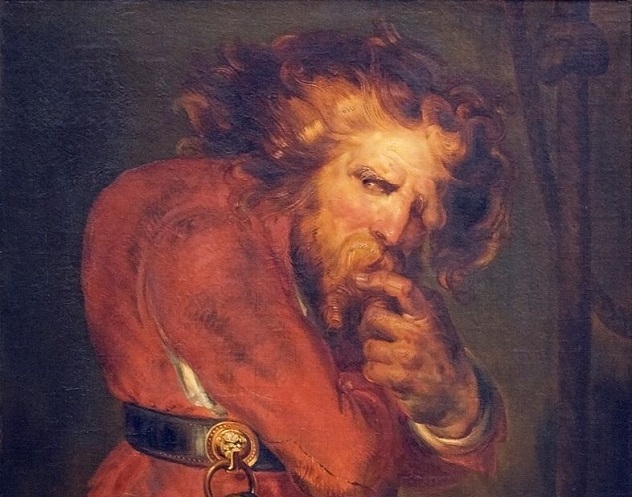
The inspiration for two of Victor Hugo’s most well-known characters, The Hunchback of Notre Dame‘s Quasimodo and Les Miserables’ Jean Valjean, has been revealed with the help of some impressive detective work.
In 1999, a journal was uncovered in the attic of a Cornwall home. It was written by Henry Sibson, a British sculptor who was working at the Notre Dame cathedral at the same time Hugo was writing his master works. Victor Hugo was hugely interested in architecture, and was one of the most outspoken of opponents for the work that was being done on the cathedral at the time. He was in favor of preserving the more Gothic architecture, and felt that the renovations were taking away from the structure’s original beauty by creating a more neoclassical look.
Sibson was one of a handful of sculptors and stonemasons that were doing restoration work on the cathedral. In his writings, he described one of the men working on the project as a “hunchback sculptor.” He refers to his reclusive, quiet nature and his distaste of mingling with the other men. Another figure that he mentions frequently is a man named Trajan, who he calls a friendly, congenial father figure.
In an early version of Les Miserables, the main character is named Jean Trejean. In the journals, both the names Trajin and Trajan are used, and it’s said that he lived in Saint Germain-des-Pres, the same town that Hugo lived at the time.
2 Simon Magnus
Faust
 Faust is the story of a man who makes a deal with the devil, agreeing to sell his soul for earthly riches in this life. Goethe’s work is thought to be deeply rooted in the Gnostic tradition. It’s characterized by the achievement of transcendence by intuitive means while everything that’s on Earth is suffering, merely a means to the end. It also preaches that the suffering isn’t the fault of humans, but the fault of the creator of mankind.
Faust is the story of a man who makes a deal with the devil, agreeing to sell his soul for earthly riches in this life. Goethe’s work is thought to be deeply rooted in the Gnostic tradition. It’s characterized by the achievement of transcendence by intuitive means while everything that’s on Earth is suffering, merely a means to the end. It also preaches that the suffering isn’t the fault of humans, but the fault of the creator of mankind.
One of the characters in the Gnostic mythology is called Simon Magnus, or Simon the Sorcerer. He’s also occasionally referred to as Simon Faustus, from the Latin favustus that translates to “the favored one.” In The Book of Acts, Simon tries to buy favor and the power of the divine from two of the apostles, John and Peter. He supposedly already had the ability to fly, to turn base metals into gold, and had mastered the powers of telekinesis. When Peter declines his offer to buy the divine and scolds him for wanting power only for selfish reasons, Simon challenges the apostle to a duel, where he is exposed as a fraud. Within the church, he was known as a fraud and a heretic, and was occasionally even associated with the Antichrist. He’s the perfect figure to sell his soul to the devil.
In Goethe’s version, Faust is seen in the company of a woman who he believes to be the reincarnation of Helen of Troy. Simon Magnus also has a similar companion in a woman who is sometimes called Sophia and sometimes referred to as Helena.
1 Giovanni Aldini And George Foster
Dr. Frankenstein And His Monster

The inspiration for Dr. Frankenstein, Giovanni Aldini, was an Italian physicist who also thought he could bring the dead back to life with the power of electricity. Aldini started his experimentation with animals. His uncle, Luigi Galvani, was well-known for making frogs’ legs twitch with applied electricity. Aldini went further, performing the same experiments—in public and with apparent success—on dead cows, sheep, and pigs.
In his native Italy, attending one of his demonstrations was something of a night out on the town. He knew he would be able to do the same thing with a person, if only he had a complete corpse. Unfortunately, Italy beheaded their criminals, and bringing back a headless body was beyond even him. He eventually turned to England, who hanged their criminals.
When George Foster was executed for the murder of his wife and children, Aldini got the body. He tried reanimating it at the Royal College of Surgeons, and even though he got it to twitch and convulse, it remained dead. The battery on his device died, and he blamed that for his failure.
He remained the talk of London for some time, and one of the witnesses to the spectacle was a doctor named Anthony Carlisle. It wasn’t long after the demonstration that he attended a Sunday get-together with friends at the home of one William Godwin. In attendance—listening to the gruesome, gory tale about the dead, convulsing body, the arc of electricity, the twitching of eyes, hands, and face—was Godwin’s wife, Jane Clairmont, and his daughter by his first wife, Mary Wollstonecraft. This girl, named Mary Wollstonecraft Godwin, would later be known as Mary Shelley, the author of Frankenstein.



